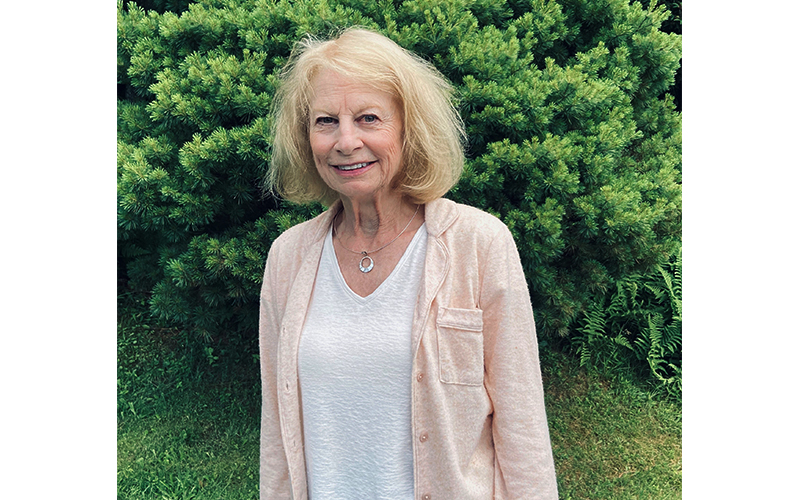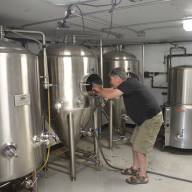After 37 years working for Central Vermont Home Health and Hospice (CVHHH) in multiple roles, Connie Colman, Warren, is more excited about health care than ever. She is retired now, but still serves on the CVHHH board.
What excites her is how the industry has changed and continues to change.
“The good news is that we are moving towards a greater emphasis on preventative health and health maintenance which when fully implemented will improve health and reduce costs. Right now, we are in the midst of a transition from a fee-for-service payment model to what is called value-based purchasing where health care providers are reimbursed according to quality patient outcomes rather than the current predominant system of payment merely based on services provided, and medical tests and procedures performed. New pay-for-performance incentives are driving us toward more emphasis on preventative health maintenance; for example, annual wellness visits to your primary care provider, and more effective case management of high-risk patients with frequent hospitalizations,” she said.
Beyond that, she said that health care has changed so significantly during her career and is moving upstream thanks to the emphasis on preventative care.
“We’re really gone to care that is more focused on patient-centered care and making informed choices based on a holistic view of what patients need. When you’re in the doctor’s office you’ll be talking about nutrition, exercise, meditation, Tai Chi and other complimentary therapies that are now an accepted part of health care,” she said.
She said current medical practice is focused on shorter hospital stays and brings people home sooner with high-tech home health nurses.
EFFICIENT USE OF DOLLARS
Home care and hospice, which research demonstrates are the most efficient use of health care dollars and the setting most patients choose, will be front and center in this transition, she added.
Colman came to nursing after working as a medical social worker, teacher and community organizer for Medical Aid in Indochina during the Vietnam years. That experience and helping manage her father’s cardiac issues led her to apply to a post-college accelerated nursing program in 1979.
“I found my passion and I never looked back. My favorite rotation was community health and after completing my BSN, I joined Waterbury Public Health, which later merged with Barre Home Health to become CVHHH,” she said.
FOUND A HOME
At CVHHH she said she found a home and a team of people working to help neighbors and community members remain at home learning better ways to manage their health, recover from surgery or illness and face end-of-life challenges.
“The goal is always to assist patients to become more independent within the limits of their particular conditions or in the case of end-of-life care, to provide comfort measures to enable patients and caregivers to live more fully,” she noted.
Over the course of her 37 years at CVHHH, she worked as a home health and hospice visiting nurse, clinical supervisor, clinical risk manager, quality director, and member of the senior team. She served on the Legislature’s designated Vermont Program for Quality in Health Care Board and is currently a member of the board of trustees at Central Vermont Medical Center.
Working as quality director at CVHHH was her favorite position and in the 1980s she started the agency’s quality assessment/performance improvement program as a way to improve the delivery of services, collect data on outcomes and figure out where the agency was coming up short. Then she engaged staff to develop a team to make improvements.
CUTTING EDGE
“That was very much on the cutting edge of health care in the 1980s. I worked on that for 20-plus years and enjoyed having staff involved in making changes for the better of their patients and families,” Colman recalled.
That program continues to this day and has entered the digital era.
“One of our initiatives to reduce hospitalizations involved the implementation of an early-on telemonitoring program. When appropriate, families are provided an iPad tablet that communicates health status data to a designated nurse in the office. This assures early management of patient symptoms such that exhausting trips to the emergency department may be averted. Avoidable hospitalizations limit patient and family stress as well as costs to the system,” Colman said.
Colman has a three-dimensional view of how CVHHH works as a former employee and board member, but also as a recipient of CVHHH’s care. Her mother had a spinal cord injury while Colman was a young mother with a 4- and 6-year-old at home.
“It was a very difficult situation to manage; she was one of the 2% of people who have intractable pain. It took a wonderful team of people from CVHHH to help us work through her many medical issues. I could never have done it without the help of the agency. We have nurses, aids, therapists and even an art therapist. We were able have her at our home where she could go outside and enjoy nature and be with her grandchildren,” Colman said.
RECOVER FASTER AT HOME
“I’ve always been a great believer that people recover faster and better when they’re at home with the support of their families, friends and neighbors. I think people are more relaxed at home. I think families benefit because they feel like they can make a loving contribution to their family member and also contribute to their end-of-life care if that’s the case,” she continued.
“To be successful CVHHH depends on the support of our community. You can support us through town funding, participate in fundraising events, donate to our annual appeals or in the name of a specific staff person who helped you or your loved one. You can also volunteer to help with office work in Berlin or train to be a hospice volunteer. These supports allow us to grow our services and also to subsidize the cost of care for those who have no insurance or inadequate insurance. As long as we can provide safe care in your home, please know that we will be there for you, your family, and your neighbors, that is our commitment,” she concluded.
Colman was raised in Princeton, New Jersey, and attended Teela-Wooket Camp in Roxbury during high school. Then her family moved to Middlebury. She met her husband Richard Travers in Middlesex and they lived at the Dimetrodon in Warren where he was one of the original three builders of the complex.












